Connecticut’s Tina Charles, left, and Maya Moore, right, hug Renee Montgomery with moments left in Connecticut’s victory in the NCAA championship in 2009. Lynne Sladky, AP.
A true marvel: Women’s Final Four Dream Team
Going to the movies these days can seem a lot like watching the women’s Final Four — there are a bunch of recurring characters in bright colors battling over colossal yet familiar stakes.
In the NCAA tournament’s 40-year history, after all, only 44 teams have advanced to the Final Four, yet Connecticut has reached that level in the last 14 tournaments, and 19 of the last 22.
Just 29 teams have even played for the national championship, and Connecticut (11) and Tennessee (8) own nearly half of the titles, four of them coming against each other.
In the past 39 years, twelve championship games have featured matchups that occurred more than once; by contrast, in that same timeframe, the men’s tournament has never had a title-game rematch.
And there’s one more parallel between the women’s Final Four and the grandiosely-named Marvel Cinematic Universe: Many of the participants have superpowers.
“I am often astonished at the level of athletic talent that is on display in these games,” Tennessee coach Pat Summitt said at the 2007 Final Four, where the Tennessee coach broke a nine-year streak without a championship. “But I try to teach my team, it takes more than talent.”
It takes toughness and perseverance, the Hall of Fame coach meant, the mentality to use winning as motivation to work more, not less.
Presumably, that’s the common bond between the greatest players in Final Four history, a collection of the sharpest shooters, greediest rebounders and precise passers in the game. Here’s an attempt to assemble a dream team of the most superlative Final Four players in history, and the coaches who led them.
Don’t be surprised if this year’s Final Four in Minneapolis requires another worthy member be added. In this universe, there’s always a sequel.
Players
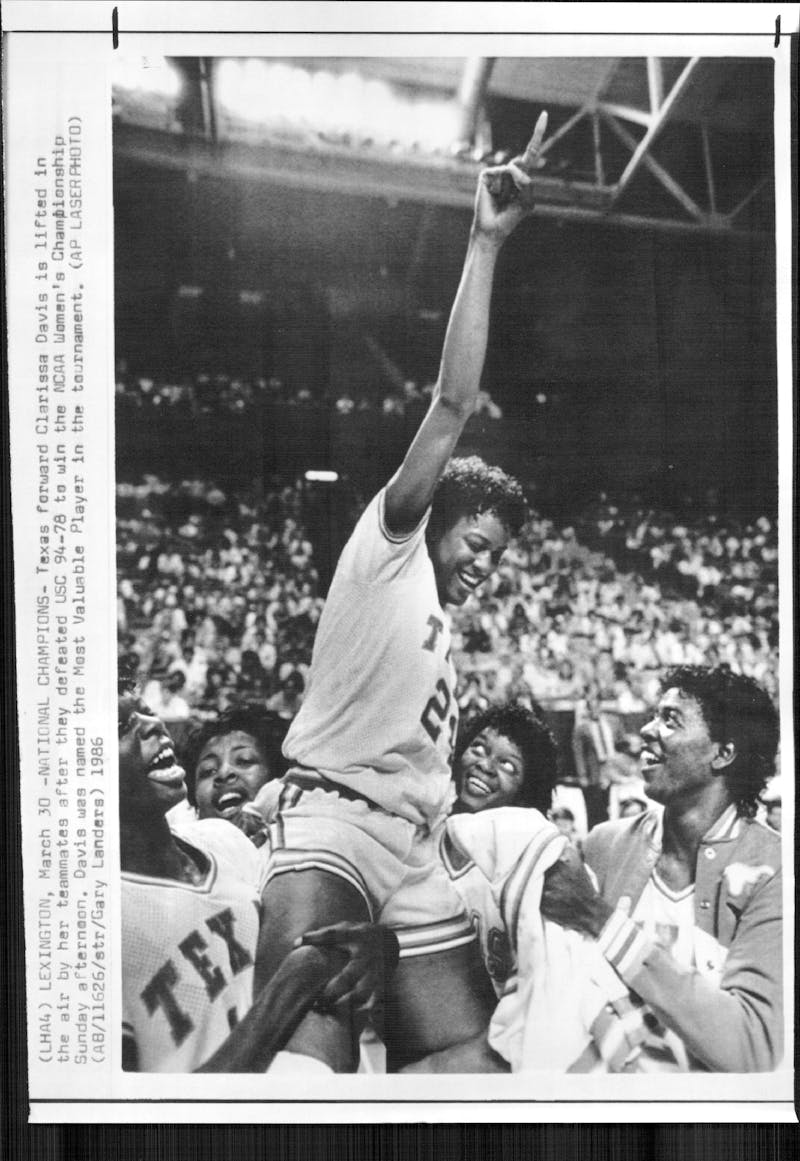
Texas forward Clarissa Davis is lifted in the air by her teammates after they defeated USC to win the NCAA Women's Championship in 1986. Gary Landers, AP.
Clarissa Davis, Texas
Forward
It was Cheryl Miller’s last game for USC, and the Longhorns’ chance to become the first unbeaten women’s team in NCAA history. But a San Antonio freshman, who didn’t even start on her senior-dominated team, whose minutes were limited by her asthma, overshadowed it all. “Nobody knew Clarissa Davis until she got here,” Texas coach Jody Conradt said after Davis, who would go on to win two Naismith Awards, scored 56 points and collected 32 rebounds in two Final Four games to finish off a 34-0 season and the Longhorns’ only championship.
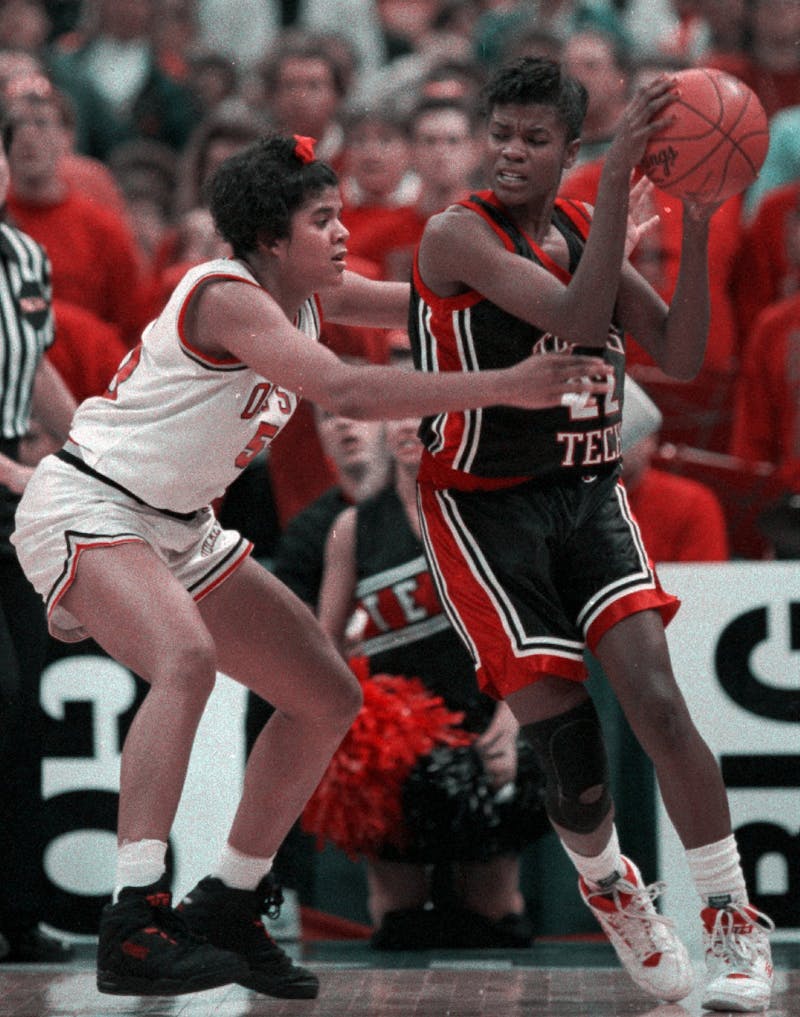
Texas Tech's Sheryl Swoopes, right, looks to drives past Ohio State's Nikki Keyton in the NCAA Women's Division I championship in 1993. Amy Sancetta, AP.
Sheryl Swoopes, Texas Tech
Guard
She went on to win four WNBA titles, three MVP awards and three Olympic gold medals, but the legend of Air Swoopes started in her final game for the Red Raiders, the NCAA championship game in 1993. Swoopes dominated Ohio State with 16-of-24 shooting and 11-for-11 from the line, a 47-point outburst that still stands as the highest scoring title game performance.
Bridgette Gordon, Tennessee
Forward
She was a little-known Floridian as a freshman and a four-year all-SEC superstar as a senior, and made a trip to the Final Four every season. Two of them ended in championships, Pat Summitt’s first, and the athletic forward was instrumental in both. Her defensive intensity helped force 20 turnovers and hold Louisiana Tech to a championship-game record low of 44 points in 1987, and her 27 points, 11 rebounds and jump-shot marksmanship overwhelmed second-ranked Auburn in 1989.

Connecticut's Maya Moore brings the ball up during the first half of the championship game against Louisville at the women's NCAA college basketball tournament Final Four in 2009. Mark Humphrey, AP.
Maya Moore, UConn
Forward
The former Lynx star is the winningest women’s basketball player in NCAA history, going 150-4 over her four seasons with the Huskies, including four straight Final Fours. And while she powered back-to-back undefeated championship seasons in 2009 and 2010, Moore was arguably at her most unstoppable in the national semifinals, where she averaged 28.5 points in four games and owns two of the five highest-scoring games in semifinal history.
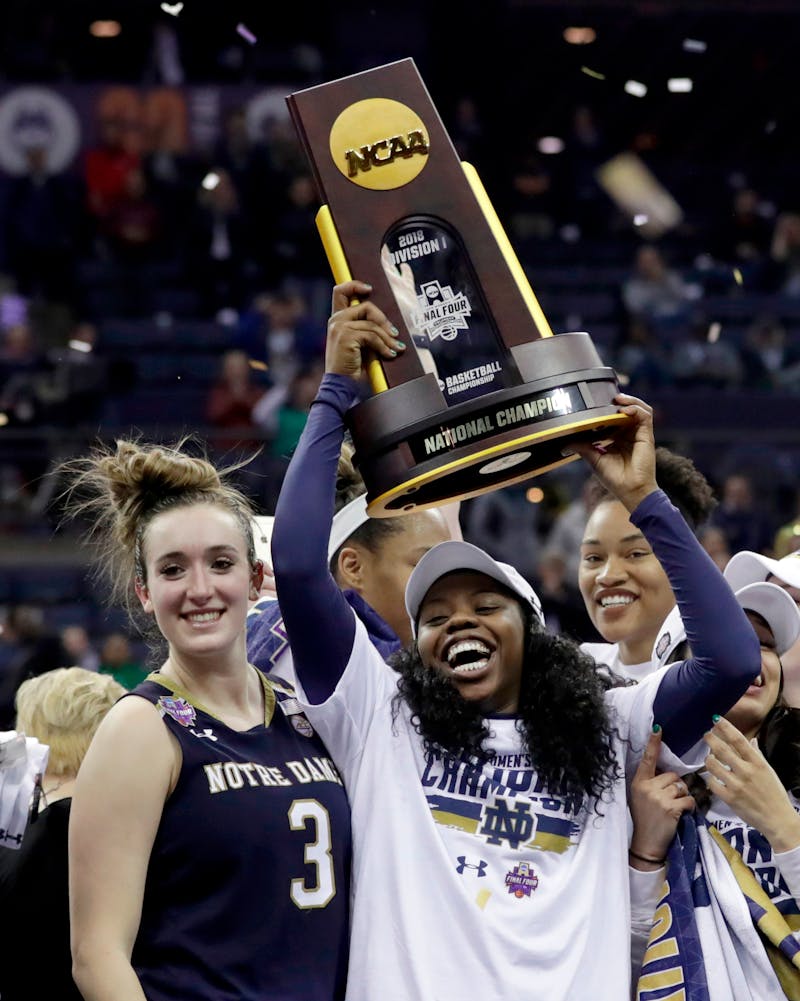
Notre Dame's Arike Ogunbowale holds the trophy after defeating Mississippi State in the final of the women's NCAA Final Four college basketball tournament in 2018. Tony Dejak, AP.
Arike Ogunbowale, Notre Dame
Guard
She wore Kobe Bryant’s No. 24, talked about her Kobe-style “mamba mentality,” and then lived up to her hero’s legend with the most clutch Final Four performance in history. With the 2018 semifinal against unbeaten UConn tied in the final five seconds, Ogunbowale nailed a 22-foot jumper to send the Irish to the finals. Then she outdid those heroics and delivered the Irish’s first title in 17 years by hitting a miraculous off-balance three-pointer at the buzzer of a tie game against Mississippi State.
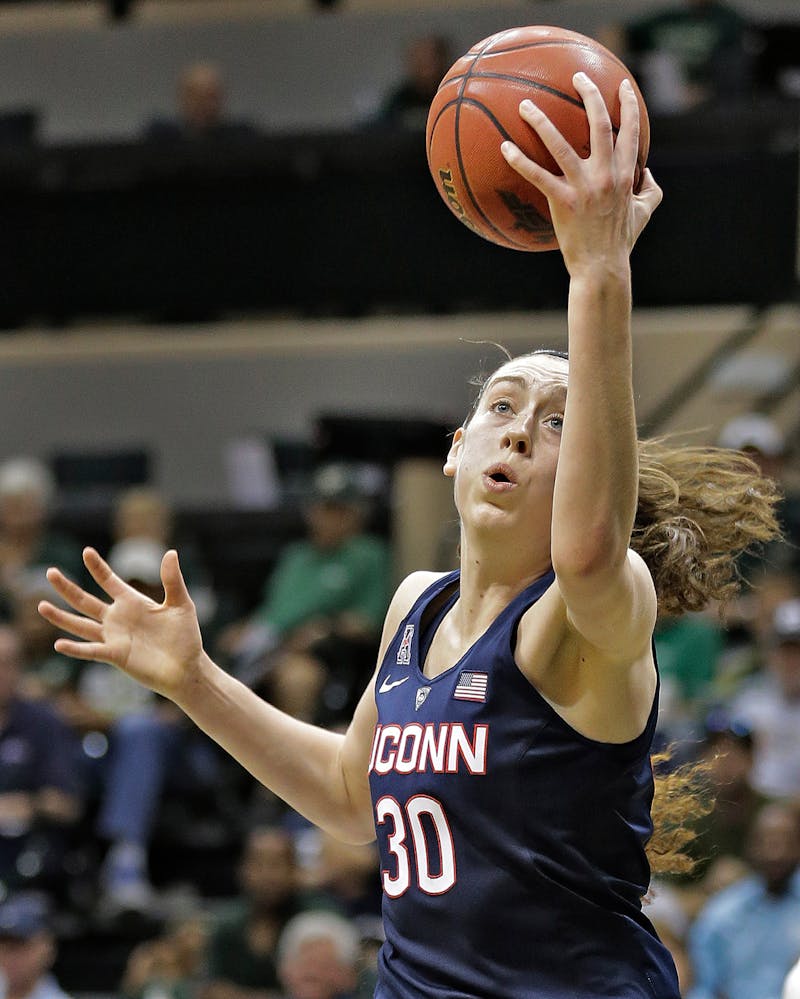
Connecticut forward Breanna Stewart grabs a rebound during the second half of an NCAA women's college basketball game against South Florida in 2015. Chris O'Meara, AP.
Breanna Stewart, UConn
Forward
In the box-score categories, Stewart’s history at the Final Four ranks among the top 10. But in the most important statistic, Stewart’s records will never be topped: Four consecutive national championships from 2013-2016, and four consecutive MVP trophies. “There just hasn’t been a player like Stewie in the women’s game in a long, long time,” coach Geno Auriemma said of his star forward, who averaged 20.5 points in eight Final Four games, all victories.
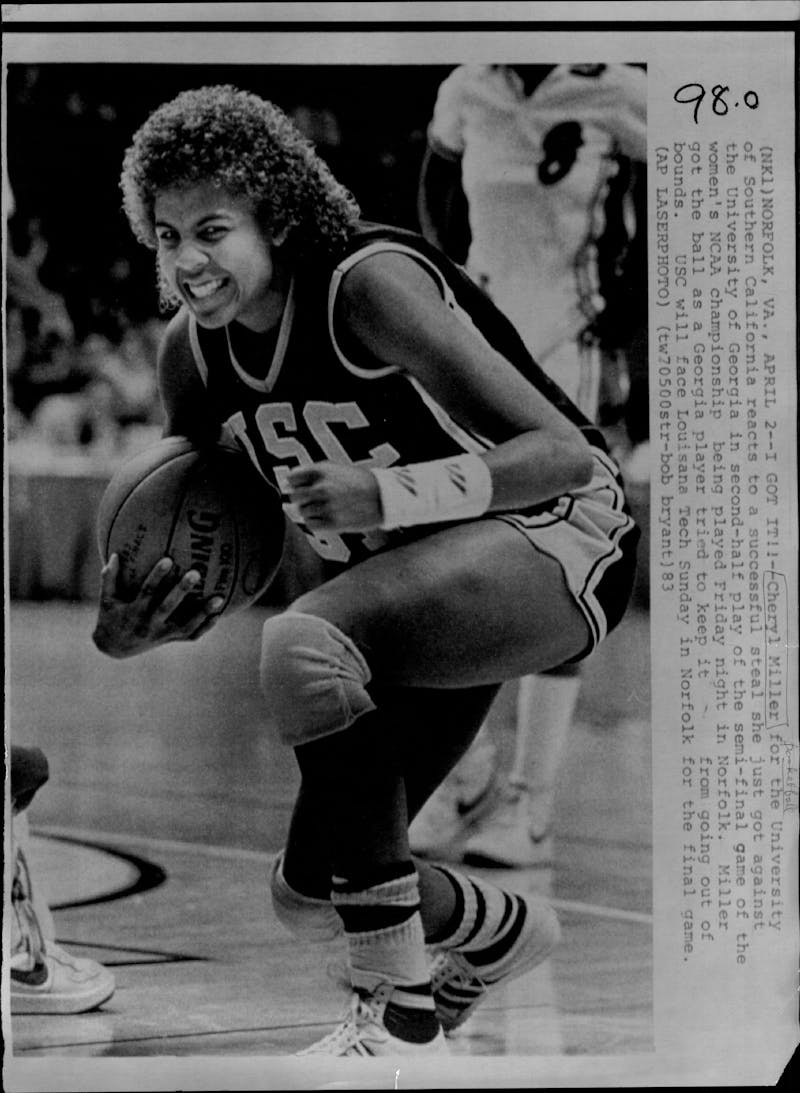
Cheryl Miller of the University of Southern California reacts to a successful steal during an NCAA semifinal game in 1991. Bob Bryant, AP.
Cheryl Miller, USC
Forward
Four straight California state championships in high school were only the beginning for the future Hall of Famer, who kept right on winning titles when she arrived in college. The sister of NBA star Reggie Miller led USC to an NCAA championship as a freshman in 1983, then repeated the feat as a sophomore, earning MVP honors both times. Miller’s fame and success was instrumental in helping the women’s tournament gain credibility in its early days.
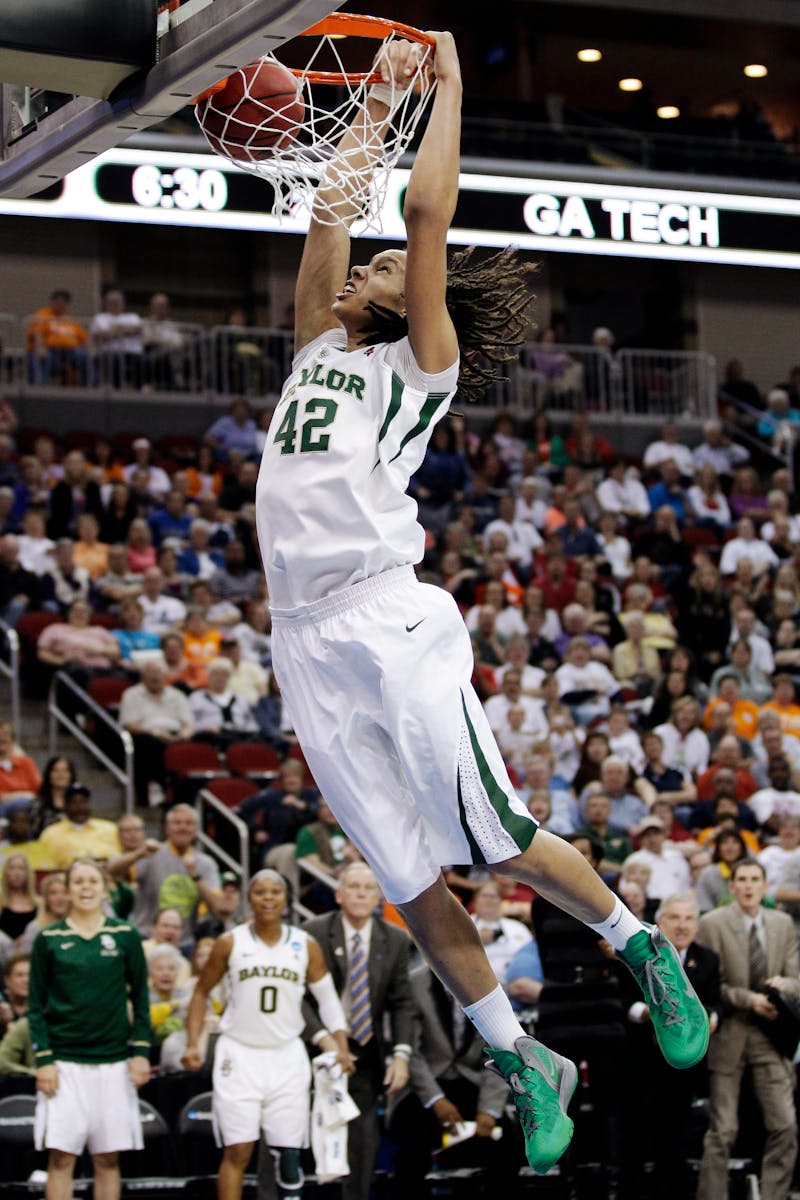
Baylor center Brittney Griner dunks the ball during the second half of an NCAA women's tournament regional semifinal college basketball game in 2013. Charlie Neibergall, AP.
Brittney Griner, Baylor
Center
After blocking more shots by herself than any other NCAA team during her junior season, Griner and her 88-inch wingspan capped one of the most fearsome seasons ever by a women’s player with 26 points, 13 rebounds and five blocks in a 2012 title-game victory over Notre Dame. Baylor finished 40-0, and Griner was Most Valuable Player in her second Final Four appearance.
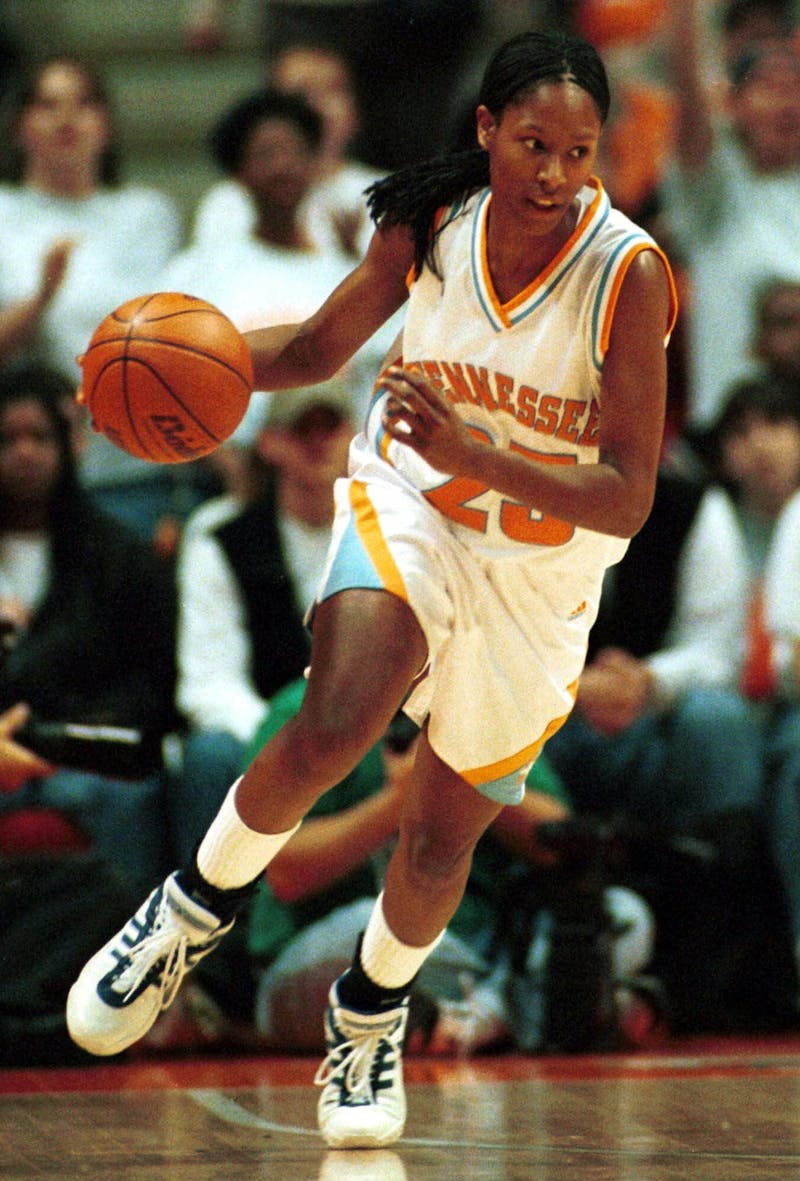
Tennessee's Chamique Holdsclaw brings the ball up court against Vanderbilt in 1999. Wade Payne, AP.
Chamique Holdsclaw, Tennessee
Forward
““We like to run,” observed Louisiana Tech coach Leon Barmore after the Vols trampled his team in the 1998 championship game, “but Holdsclaw likes to fly.” Her graceful speed carried the New York native to three straight NCAA titles at Tennessee from 1996-98, two of them with her as MVP, and allowed her to score 479 points in her four-season NCAA tournament career, more than any other woman.
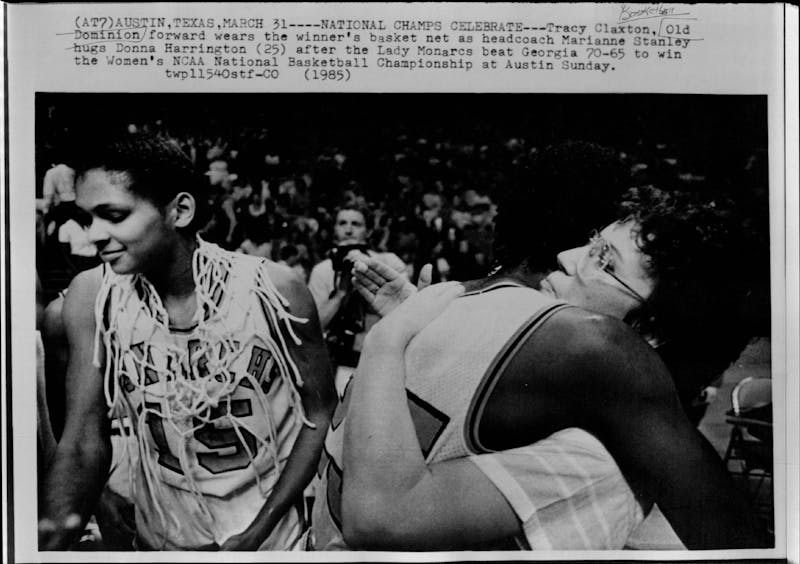
Tracy Claxton, Old Dominion forward, wears the winner's basket net as head coach Marianne Stanley hugs Donna Harrington after the Lady Monarcs best Georgia in 1985. AP.
Tracy Claxton, Old Dominion
Forward
Few players were as intense on the court as the Connecticut native, and that intensity helped the Monarchs, twice a champion in the AIAW days, to their first NCAA title in 1985. “You better get on the bleeping boards,” Claxton reminded center Medina Dixon during their title-game win over Georgia, “or we’re going to lose this bleeping championship.” Claxton lived up to her words, grabbing 20 rebounds, 12 of them on the offensive end, and scoring 17 to earn MVP honors.
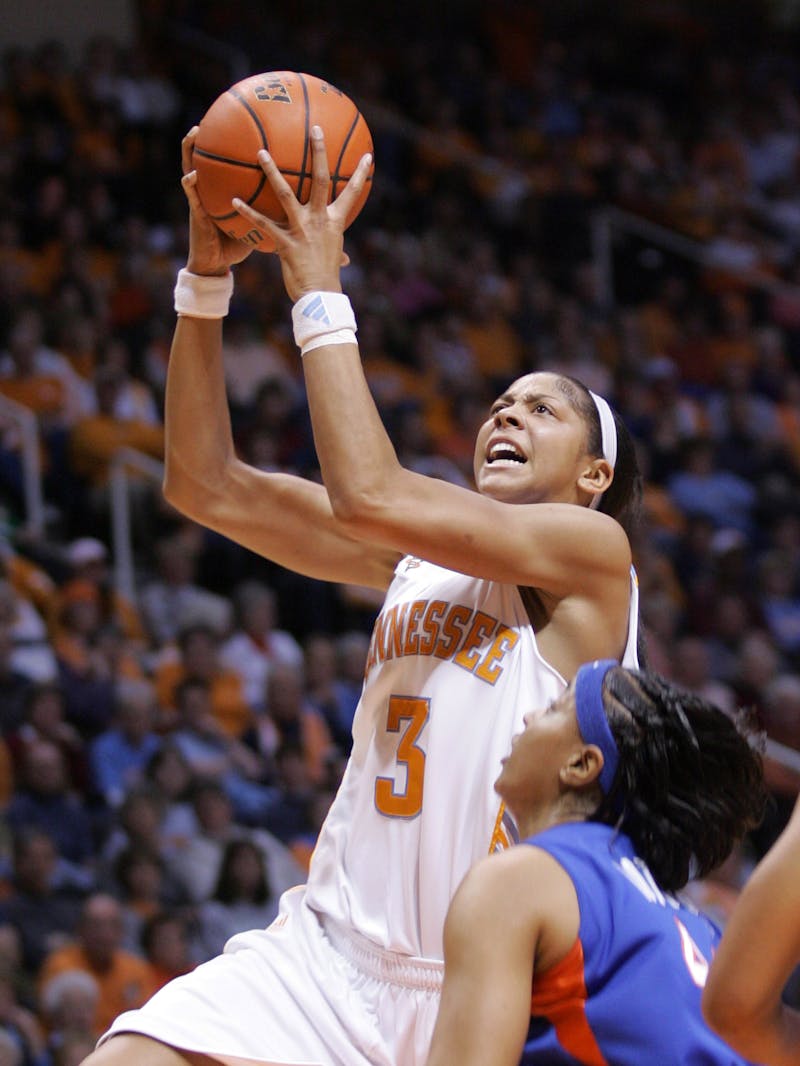
Tennessee's Candace Parker shoots during the first half of a college basketball game in 2008. Wade Payne, AP.
Candace Parker, Tennessee
Forward
After winning MVP honors en route to the 2007 NCAA championship, Parker dislocated her left shoulder in the regional finals a year later. But Parker strapped a brace around her shoulder at the Final Four, ignored the pain, began driving to the basket rather than taking outside shots, and grabbed 15 rebounds in the semifinal win over LSU. In the title game, she scored 17 more and became a champion, and MVP, for a second time.
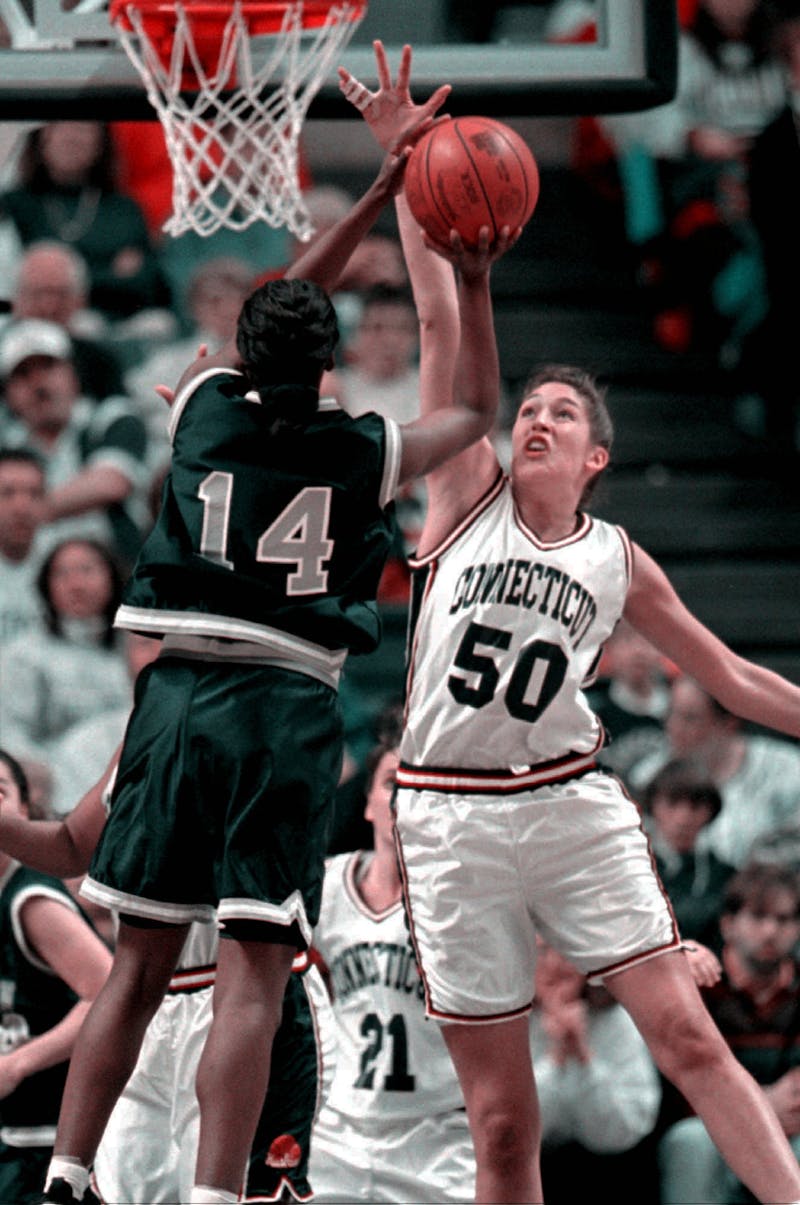
Connecticut's Rebecca Lobo reaches in and blocks a jump shot by Georgetown's Daynia LaForce in 1995. Bob Child, AP.
Rebecca Lobo, UConn
Center
Having grown up about 25 miles from Storrs, Lobo turned down dozens of scholarship offers to attend UConn, and it’s worth asking whether the Huskies’ women’s hoop dynasty would have happened if she hadn’t. Lobo was the centerpiece of Auriemma’s first champion, leading an unbeaten UConn to the 1995 Final Four at Target Center in Minneapolis. In the title game against Tennessee, Lobo ignored foul trouble, hit tough shots, and rallied the Huskies from a nine-point deficit with 11 second-half points to earn the first of UConn’s 11 national championships.
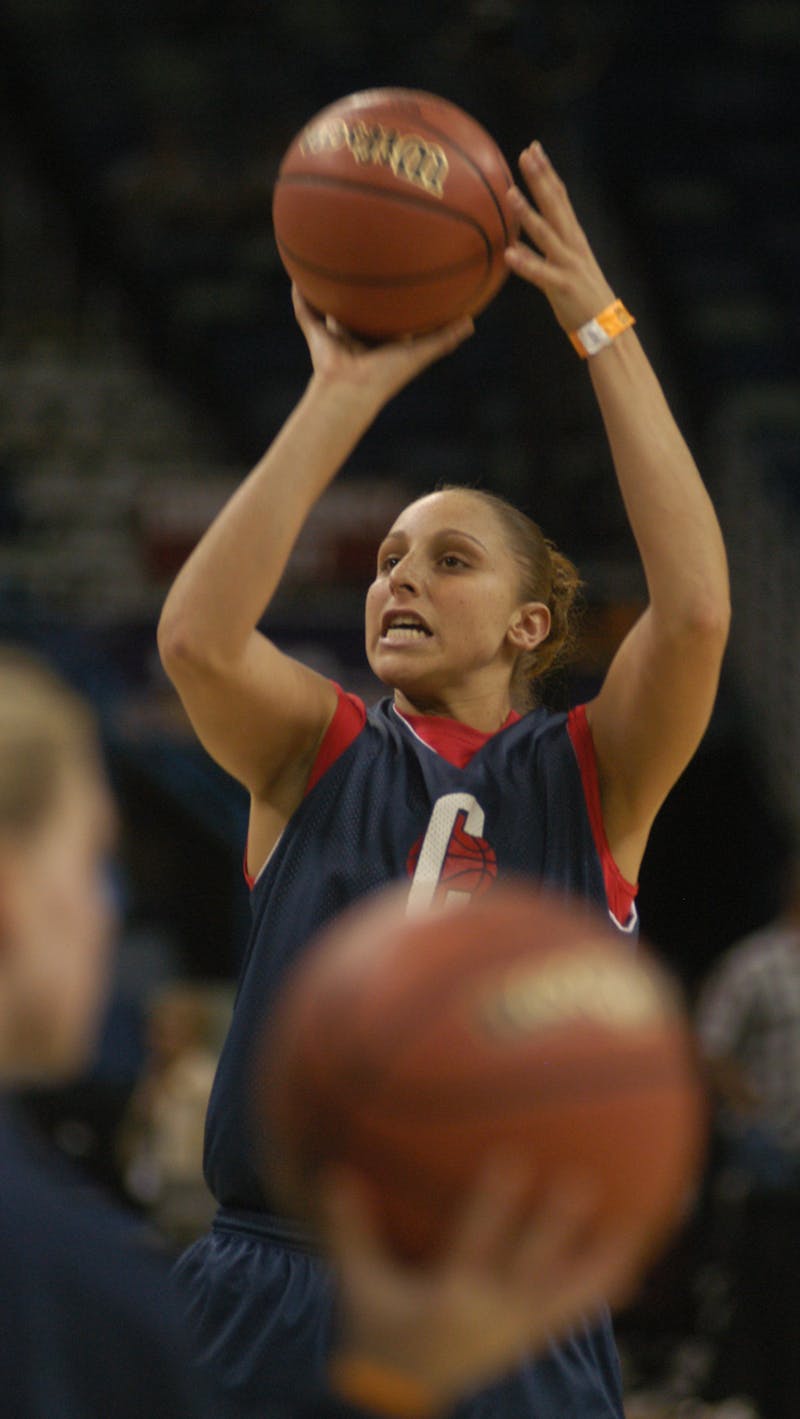
Diana Taurasi pulls up for a upshot during practice in 2004. Kyndell Harkness, Star Tribune.
Diana Taurasi, UConn
Guard
Auriemma once summed up his team’s three straight national championships from 2004-04 very succinctly: “We have Diana and you don’t,” the coach said, and never was that more true than in the Final Four. One of the best passers and outside shooters in the game, Taurasi scored 54 points at the 2003 Final Four and also contributed a game-clinching steal on the final play of the Huskies’ semifinal win over Texas; a year later, it was a critical assist, a blocked shot and 34 points to capture the 2004 title.
Coaches
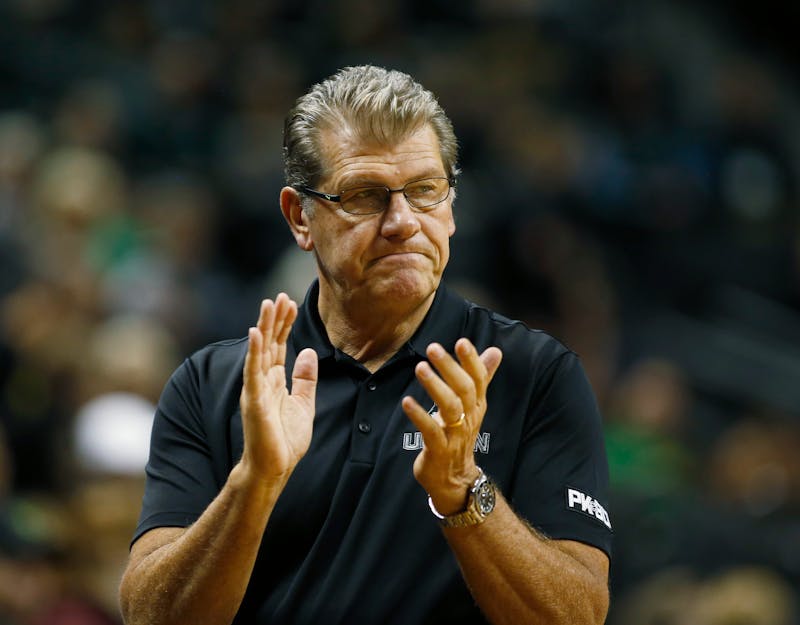
Connecticut head coach Geno Auriemma claps for his players the first half of an NCAA college basketball game in 2017. Timothy J. Gonzalez, AP.
Geno Auriemma, UConn
His Huskies are only 11-10 in national semifinals games, so what’s the big deal? Well, two things: Those 21 semifinal games have come in the past 30 tournaments, including the last 13 in a row. And even more incredible? Auriemma is a spotless 11-0 in championship games, his teams dominant when the pressure is greatest. The Italian-born 68-year-old coach, now in his 37th season at Connecticut, is the most successful coach in basketball history, having posted six undefeated seasons, six more with just one loss, and winning streaks of 90 and 111 consecutive games. The Final Four is obviously his biggest challenge — UConn has lost four straight semifinal games — but if the Huskies reach the finals, they’re unstoppable, having won their 11 titles by an average of 15.6 points.
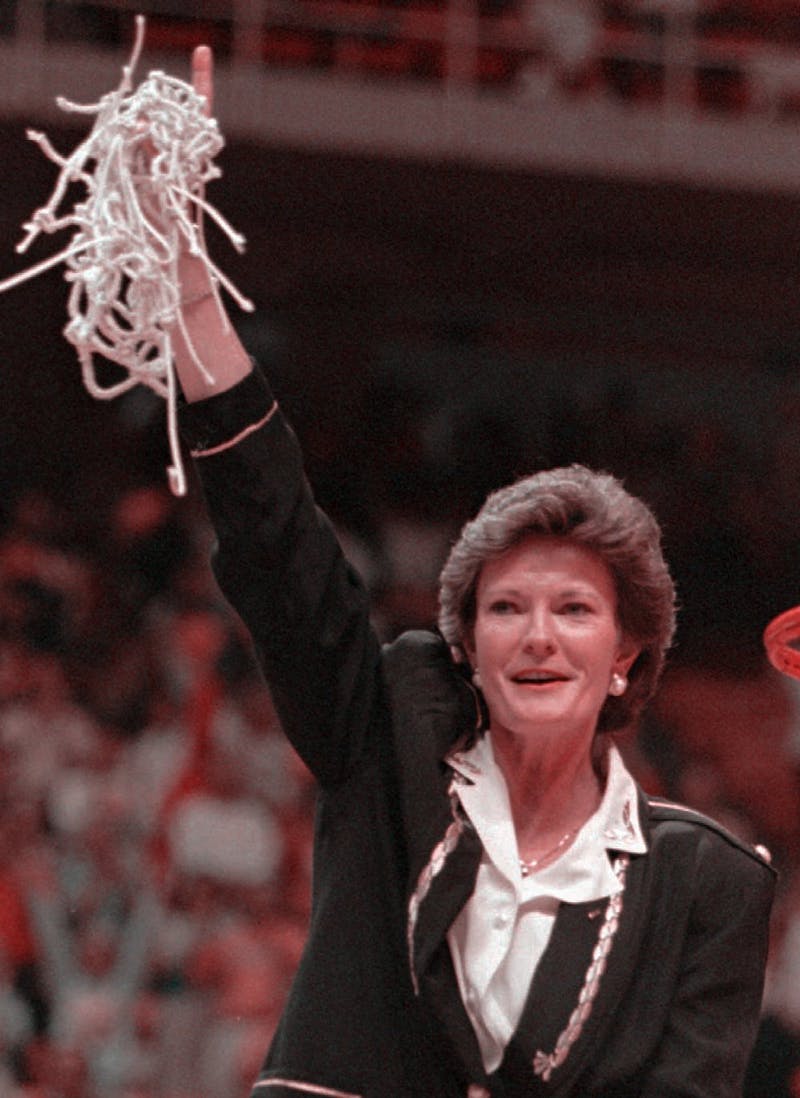
Tennessee head coach Pat Summitt waves at the fans and takes her souvenir net after the Lady Volunteers defeated Texas Tech in the championship game of the NCAA Mideast Regional in 1995. Mark Humphrey, AP.
Pat Summitt, Tennessee
Not many coaches win the Presidential Medal of Freedom, but that reflected the effect that Summitt had on her blossoming sport. For all the games and championships the Lady Vols won under her leadership, Summitt said she was most proud of her players’ achievements off the court: Every one of them who completed her eligibility graduated with a degree. Summitt’s 18 Final Fours and eight national championships seemed untouchable until UConn’s emergence. And a rivalry, sometimes caustic, grew between them, fueled by Auriemma’s four title-game victories, the first coming in Minneapolis in 1995, against the Lady Vols. But Summitt, who died in 2016, went 21-10 in the Final Four and never failed to make the NCAA tournament.
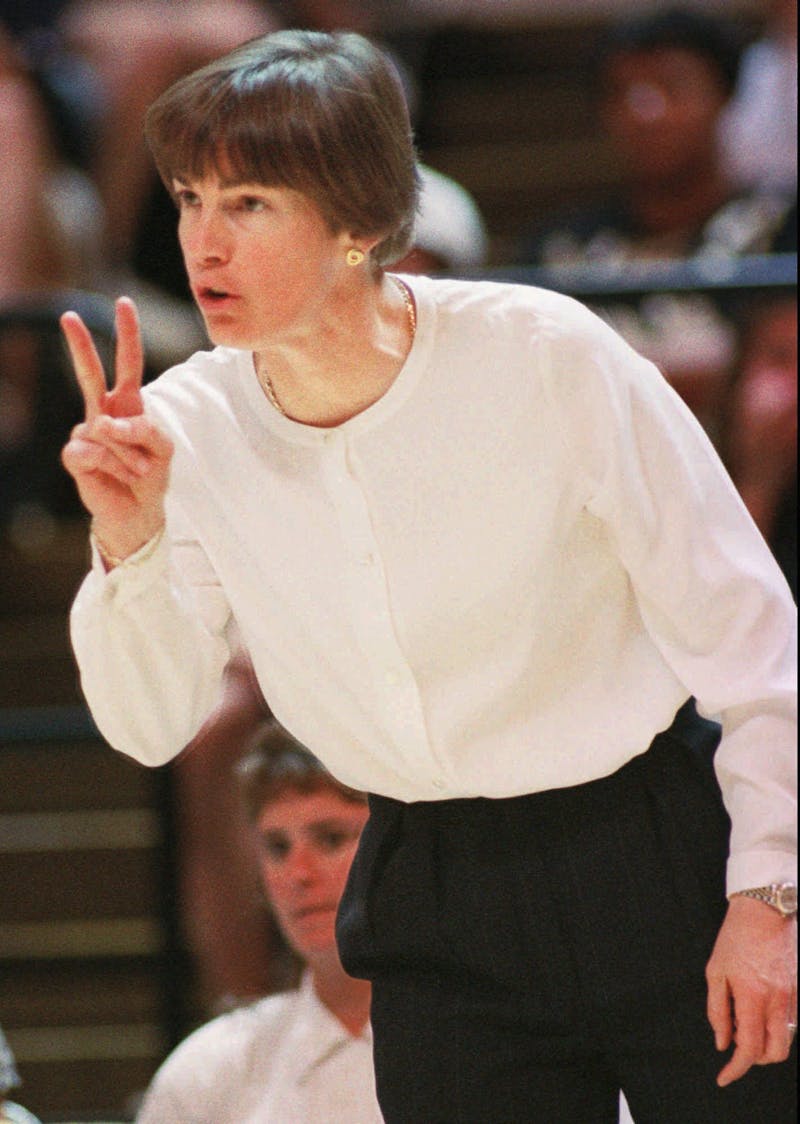
Stanford coach Tara VanDerveer, shown coaching the USA National Team in 1996. Sam Morris, AP.
Tara VanDerveer, Stanford
After leading Ohio State to four straight 20-win seasons, VanDerveer made a mistake, several peers told her, in accepting a job at Stanford in 1985, and when neither of her first two seasons with the Cardinal included a winning record, it appeared the critics were right. Five years and two national championships later, there were no more doubts. But VanDerveer, who owns more wins than any coach in women’s college history but is 8-11 in the Final Four overall, endured 10 straight Final Four appearances without another title until a breakthrough last April, when her 29-year-wait ended with a 31-2 season and a thrilling 54-53 win over Arizona.
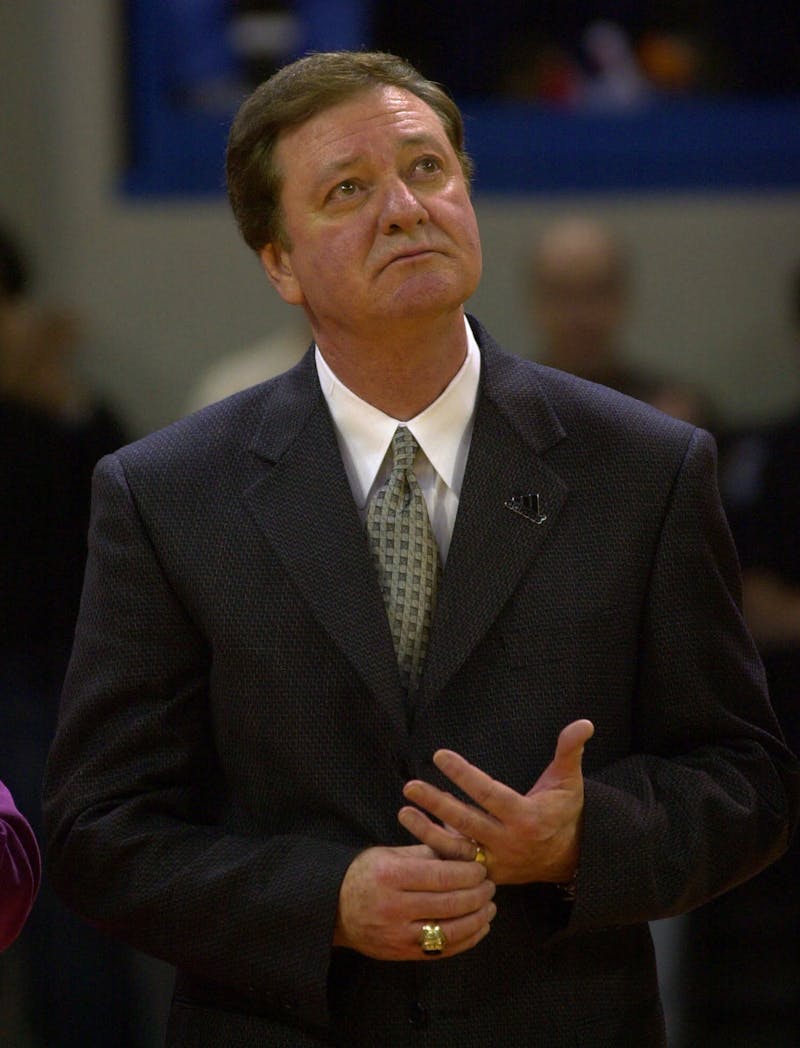
Louisiana Tech women's basketball coach Leon Barmore looks up as his no. 12 jersey is put on display at Thomas Assembly Center in 2001. Bill Haber, AP.
Leon Barmore, Louisiana Tech
Born and raised in Ruston, La., Barmore was happy coaching high school basketball at his alma mater until Sonja Hogg, who had created the Lady Techsters program in the mid-1970s, asked him to become an assistant. Barmore helped Hogg and Louisiana Tech win the first women’s NCAA tournament in 1982, and reach the title game, falling to Cheryl Miller and USC, in 1983. When Hogg left for Baylor a couple of seasons later, Barmore was promoted to head coach and won 86.9 percent of Tech’s games over the next 16 seasons, at the time the highest winning percentage in basketball history. Barmore reached seven Final Fours, going 5-6 and rallying his team from a 14-point deficit against Auburn to win the 1988 national championship.
